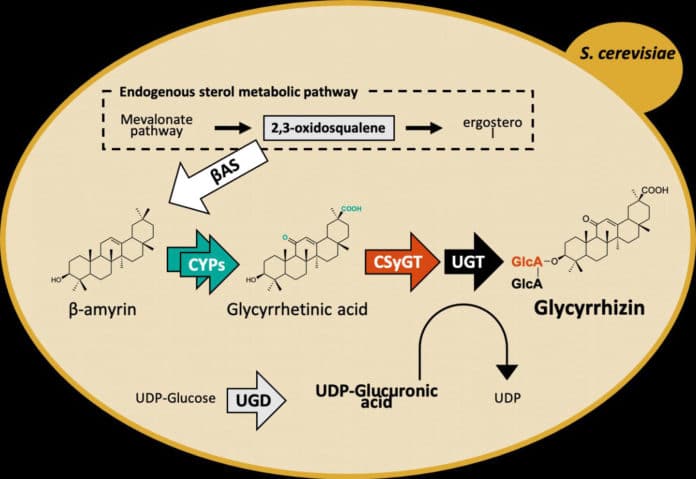Many plants produce saponins, a diverse group of chemicals, which derive their name from their ability to form soap-like foams in aqueous solutions. Soyasaponins, found in soybeans, has anticarcinogenic and antioxidant properties.
However, how plants produce saponins remains unclear.
In collaboration with National Agriculture and Food Research Organization (NARO), RIKEN, and Chiba University, a study by Osaka University has shed light on this and uncovered a vital link in the complex biochemical pathway for saponin synthesis.
Scientists examined the co-expression gene network of saponin synthesis. They used technologies, including gene cloning and sequence comparisons, coupled with biochemical analyses in mutants and genetically modified plants of a model legume species.
A new enzyme in the CSyGT family came to light. Enzymes in the CSyGT family are similar in structure to the enzymes producing cellulose in plant cell walls. Unfortunately, the newly discovered enzyme does a different job: it is responsible for a critical step in saponin synthesis, where a sugar molecule is attached to the triterpenoid backbone.
Scientists noted, “This discovery challenged the generally accepted view that a different class of enzyme was probably involved in this step.”
Later on, scientists went on to insert the gene for the newly discovered CSyGT enzyme, along with genes for other steps in the biochemical pathway, into yeast cells. The engineered cells successfully produced glycyrrhizin from simple sugars, indicating a potential route for industrial manufacture of valuable saponins by growing yeast cells on a large scale.
The corresponding author Toshiya Muranaka said, “Our multi-disciplinary team showed, for the first time, that this type of enzyme is important in saponin synthesis. Our results fill a gap in previous knowledge and also challenge the accepted view of how this pathway for biosynthesis operates.”
Soo Yeon Chung from Osaka University said, “We showed that yeast cells could make glycyrrhizin when we insert the necessary plant genes.”
Hikaru Seki, also from the Osaka University, said, “This offers the prospect of new ways to produce these valuable substances commercially, and to generate completely novel types of saponin that might have further beneficial applications in medicine or the food industry, producing the chemicals in cell cultures would also reduce the need to deplete natural plant resources and so help to meet the vitally important Sustainable Development Goals.”
Journal Reference:
- Chung, S.Y., Seki, H., Fujisawa, Y. et al. A cellulose synthase-derived enzyme catalyzes 3-O-glucuronosylation saponin biosynthesis. Nat Commun 11, 5664 (2020). DOI: 10.1038/s41467-020-19399-0
